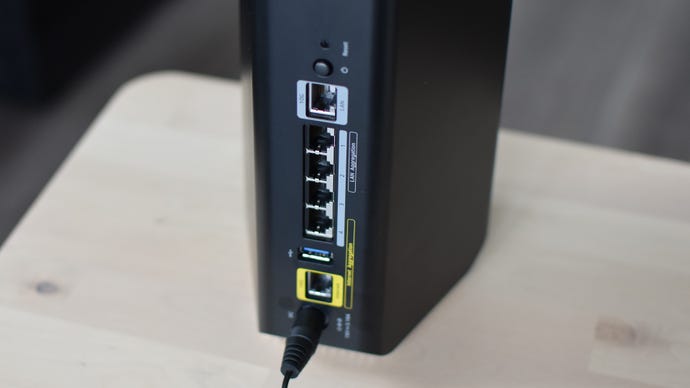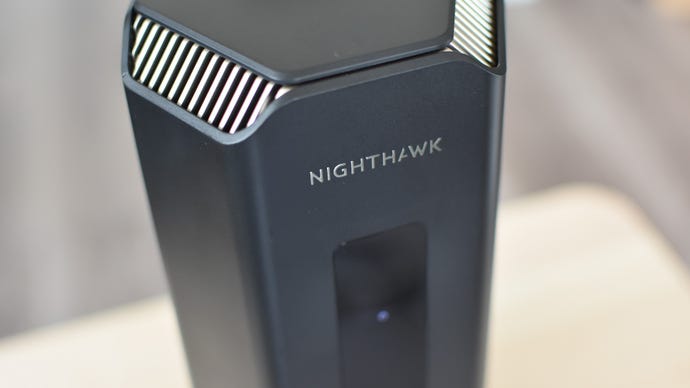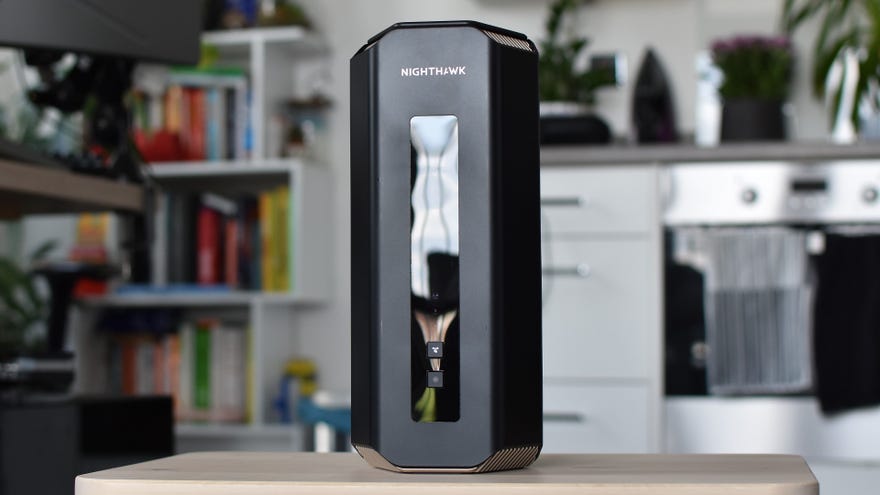Should you bother with... Wi-Fi 7?
The hows and Wis of the latest in cable-free connectivity
Welcome to another edition of Should You Bother With, where the useless and the utilitarian of PC gaming hardware are sorted into two satisfyingly neat piles. And after the hard science demanded by SYBW’s previous look at Hall effect keyboards, I’m pleased to say that the concept behind this week’s focus can be summed in with as few words as "faster Internet." It’s Wi-Fi 7 – or 802.11be, to its friends.
Having 'launched' in January 2024, Wi-Fi 7 is the latest in a line of various wireless networking standards that you may already be familiar with, and that you almost definitely already use. Wi-Fi 5 (802.11ac) is the most ubiquitous, while Wi-Fi 6 and Wi-Fi 6E (both 802.11.ax) trade costlier hardware for higher speeds and bandwidths. Wi-Fi 6E, in particular, introduced the option of connecting to a 6GHz band, the higher frequency of which (versus the usual 2.4Ghz and 5GHz bands) allows for quicker data transmissions at the cost of shorter range. Lower latency, too, which should better serve ping-averse gaming types (hi).
Despite this, Wi-Fi 6E has had a bit of a rough time, taking years to achieve even somewhat widespread adoption. That's thanks to an awkward mingling of early component shortages, higher hardware prices, and a lack of interest from users who remained happy with Wi-Fis 5 and 6. Thus, Wi-Fi 7 aims to make a greater stride forward. Besides keeping the 6GHz band, its theoretical speed limit of 46Gbit/s is over four times higher than that of the previous generation, and it doubles the width of the data channels it uses. That means more bandwidth, which means less chance of getting clogged up and slowed down when multiple devices are connected to the same network.

Wi-Fi 7 can also pull a move called Multi-Link Operation, allowing compatible devices to send and receive data across a blend of the 6GHz, 5Ghz and 2.4GHz bands – not unlike how your PC’s CPU can assign different tasks to different cores. This should also help with busy networks, as each device’s data load can be spread across the multiple bands. Neat, no?.
Party tricks aside, the long and short of it from a gaming standpoint is that Wi-Fi 7 promises lower latencies, more stable connections, and faster downloads for all those 100GB-plus games that developers keep making. All appealing notions, so why has Wi-Fi 7 not blown up already?
There’s no doubt that technologically, it’s miles ahead of Wi-Fi 6, though it’s facing some of the same teething problems that both 6 and 6E endured back in the day. The lack of compatible hardware is a biggie: the vast majority of laptops, motherboards with onboard wireless connectivity, and handheld gaming PCs like the Steam Deck only support the older standards. Each one is backwards compatible – so a desktop with a Wi-Fi 6E receiver can connect to a Wi-Fi 6 or 5 router, no probs – but you can’t get true Wi-Fi 7 speeds without both the router and the receiver supporting the latest version.
Still, this kind of hardware is rare, not non-existent. CES 2024 was full of gaming laptops with Wi-Fi 7 ready to go, and motherboard manufacturers have been building Wi-Fi 7 capability into both Intel and AMD mobos since before the wireless standard was even formally released. In other words, it’s not too early see how Wi-Fi 7 performs away from the router laboratories and in real-life, at-home situations. For this, I’d like to invite you into my flat, or at the very least, the utility cupboard where my Internet wall socket is.

Representing literally all Wi-Fi 7 routers in my testing will be the Netgear Nighthawk RS700, that towering monolith you’ve been seeing in the pictures. It ain’t cheap – yours for just £700 / $700 - but it is about as high-end an example of the form that’s on sale right now, so it shouldn’t hold anything back. If anything, I’m underutilising it by hooking it up to my 1Gbit/s connection; it can take up to 10Gbit/s, though such speedy packages aren’t really available to laypeople right now.
To see how it can improve my networking life, the RS700 is going up against two other routers. One, the ZTE H298A, is just a basic Wi-Fi 5 box that Hyperoptic gave me for free. If the RS700 is Goliath, this isn’t so much David as it is David’s sodden loincloth, but since I’d wager it’s quite typical of a lot of UK household routers, it's in. I’ve also got a TP-Link Archer AX1500 (no relation) to rep Wi-Fi 6. Again, this is nowhere near as luxe as the RS700, though it is perfectly capable of producing good 802.11ax speeds.
On the client end will be a desktop PC equipped with either the Asus ROG Maximus Z790 Dark Hero, an Intel motherboard with a Wi-Fi 7 receiver, or the Asus TUF Gaming Z590-Plus, which will help demonstrate how the older routers perform with a Wi-Fi 6 receiver. The benchmarks will be relatively simple, with download/upload speeds recorded by both Ookla and Google’s internet speed test tool, as well as an easily replicable gaming ping test using one of my regularly visited Team Fortress 2 community servers. However, there’ll be no fudging of the numbers by relocating my entire desk to sit next to each router. They’ll have to beam data through a couple of walls to reach the PC, a distance of about eight metres as the (presumably noncorporeal) crow flies. Lastly, just to be extra-extra-indicative, I’ve ran each test under both light and heavy load conditions. The former will just have the PC and an idling smartphone as connected devices, while in the latter, each setup must additionally juggle a second PC, one laptop, and a Steam Deck all downloading from Steam at once, while a TV streams 4K video. This will show us how Wi-Fi 7 fares against its predecessors in a torturous, multi-user household scenario.
Several hours of testing and one writing tense change later, here are the results. You might wanna click to embiggen these:
Straight away with the download tests, it does seem that range and physical obstructions can neuter Wi-Fi 7’s speed advantage. Nevertheless, an advantage it remains. Factoring in the drastically superior upload speeds, Wi-Fi 7 indeed looks like a bigger jump up than previous generations attempted. On the 6GHz band, it’s especially better for both downloads and uploads under heavy network load; while not immune to the same major speed losses as Wi-Fi 6, its final transfer speeds were about twice as high in the Ookla download test and over three times as high in Google’s test. Although I didn’t make a proper benchmark of it, these also translated into faster everyday-usage download speeds in Steam, with the RS700 peaking at 78MB/s and the AX1500 peaking at 49MB/s.
The ping test initially looked like bad news for RS700, only managing to slightly best the AX1500 and actually losing to the freebie H298A on light load. With a full house of data-hungry devices, however, it made a much better argument for Wi-Fi 7, only gaining 2ms of latency while the other routers struggled.
If your eyes glazed over after reading that "faster Internet" bit and have only just refocused, I’ll gladly confirm that yes, Wi-Fi 7 is faster. Maybe that low load TF2 ping result isn’t great but personally, I’d rather have an extra 10ms when the going is easy than an extra 70ms when it gets tough.
You do have to go for a full set of the hardware, though. Backwards compatibility may allow you to pick up a Wi-Fi 7 mobo or laptop now and upgrade your router later, but when pairing an older-gen router to a Wi-Fi 7 receiver, I was consistently getting slower download/upload speeds than with a Wi-Fi 6 one. I’m not sure why, but it happened too consistently to be a mistake. Nay, to switch to Wi-Fi 7 really means updating your devices and the router both.

As it stands, that’s quite the investment. Even if you don’t drop the equivalent of an RTX 4070 Ti on something like the RS700, you’re still looking at £300 for the TP-Link Archer BE9300. That’s the cheapest Wi-Fi 7 router I can find at the moment, so it will be years until there are real budget options like the £45 AX1500 is for Wi-Fi 6. The same goes for compatible client devices: motherboards with Wi-Fi 7 baked in average well above £200, and all those laptops that launched at CES? More like £2000, with rare exceptions like the £1549 HP Omen Transcend 14. PCIe adapters like the MSI Herald BE ($50 and annoyingly hard to find in the UK) do provide a less expensive route into working Wi-Fi 7 rigs, though they depend on you having a free PCIe slot, and are still pricier than their Wi-Fi 6 equivalents.
What’s more, even if you do pay the big bucks for all the appropriate Wi-Fi 7 kit, you’ll also need a sufficiently quick Internet package to get any real benefit out of it. Today, that likely means a 1Gbit/s service, which at least here in the UK typically represents a top premium option. I also tested the RS700 on a more affordable 150Mbit/s connection, and there was no meaningful upload/download speed improvement over the Wi-Fi 5 setup.
You could balance this by saying Wi-Fi 7 hardware is better for futureproofing, and will stand ready when either a) Gigabit-and-above connections become cheaper or b) even faster connections, like 2.5Gbit/s and the RS700’s favoured 10Gbit/s, are more widely available. The first scenario probably is inevitable but you’ll be waiting a long, long time for the second to come about. 10Gbit/s, in particular, has barely broken into the business broadband market, never mind that of private homes. The possibility of a service that comes anywhere near Wi-Fi 7’s on-paper 46Gbit/s limit seems further away still.

Verdict: Should you bother with Wi-Fi 7? Not yet. I say that with a pang of sadness, because who doesn’t like faster Internet? I like faster Internet. And low ping. And not have to worry about slowdown because my fiancée’s on an Interior Design Masters binge.
Wi-Fi 7 offers all of that, and for what it's worth, I'm sure its time will come. Right now it feels a little like the networking equivalent of the electric car: something niche that, for one reason or another, we’ll all end up using in the future. It happened to Wi-Fi 5, after all.
Unfortunately, and also like the electric car, it’s currently an extravagance that not everyone can afford, with a lack of supporting infrastructure that might give pause to those that can. Again, this is just me, but my job regularly relies on the ability to download big, fat games as quickly as possible, and I still wouldn’t pay a minimum of £350 (and potentially over a grand) to do that somewhat faster. Perhaps in a couple of years or so, when the routers and client devices are more attainable, things will be different. Right now? Better for Wi-Fi 7 to bide its time.









